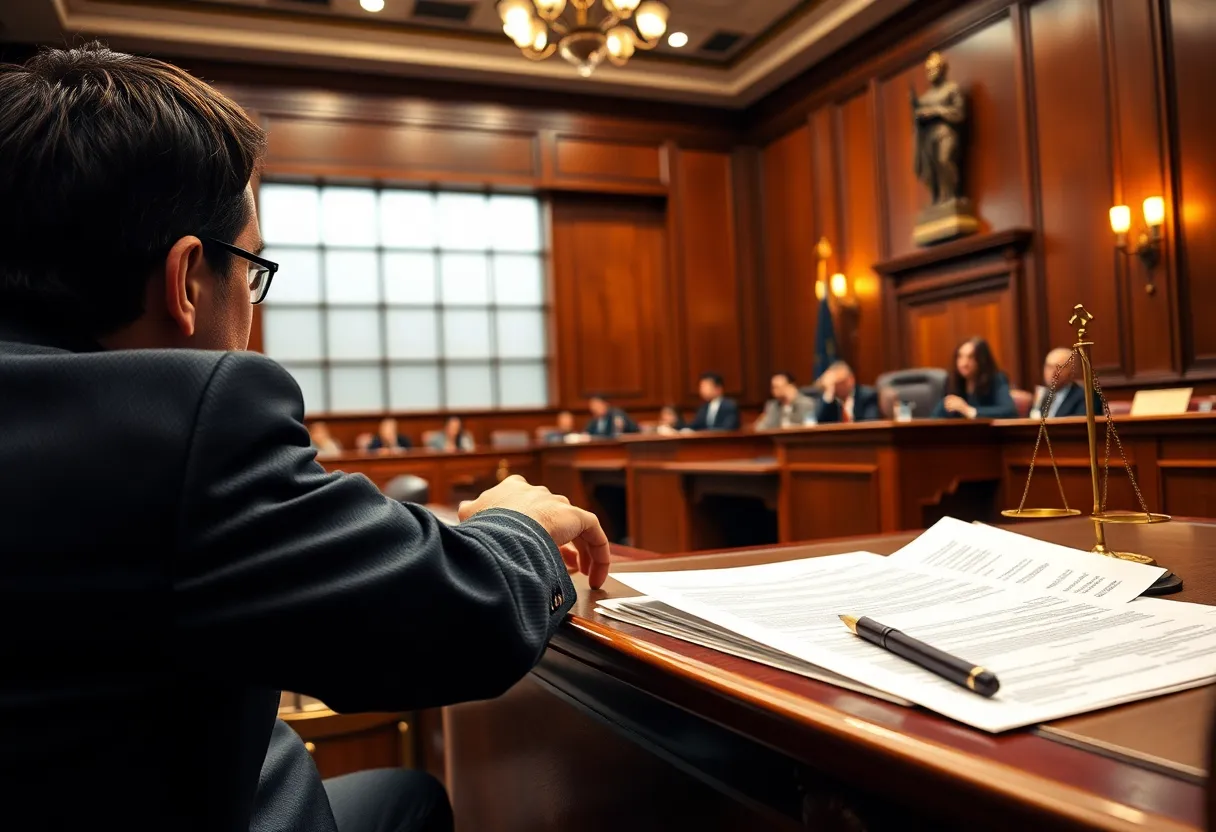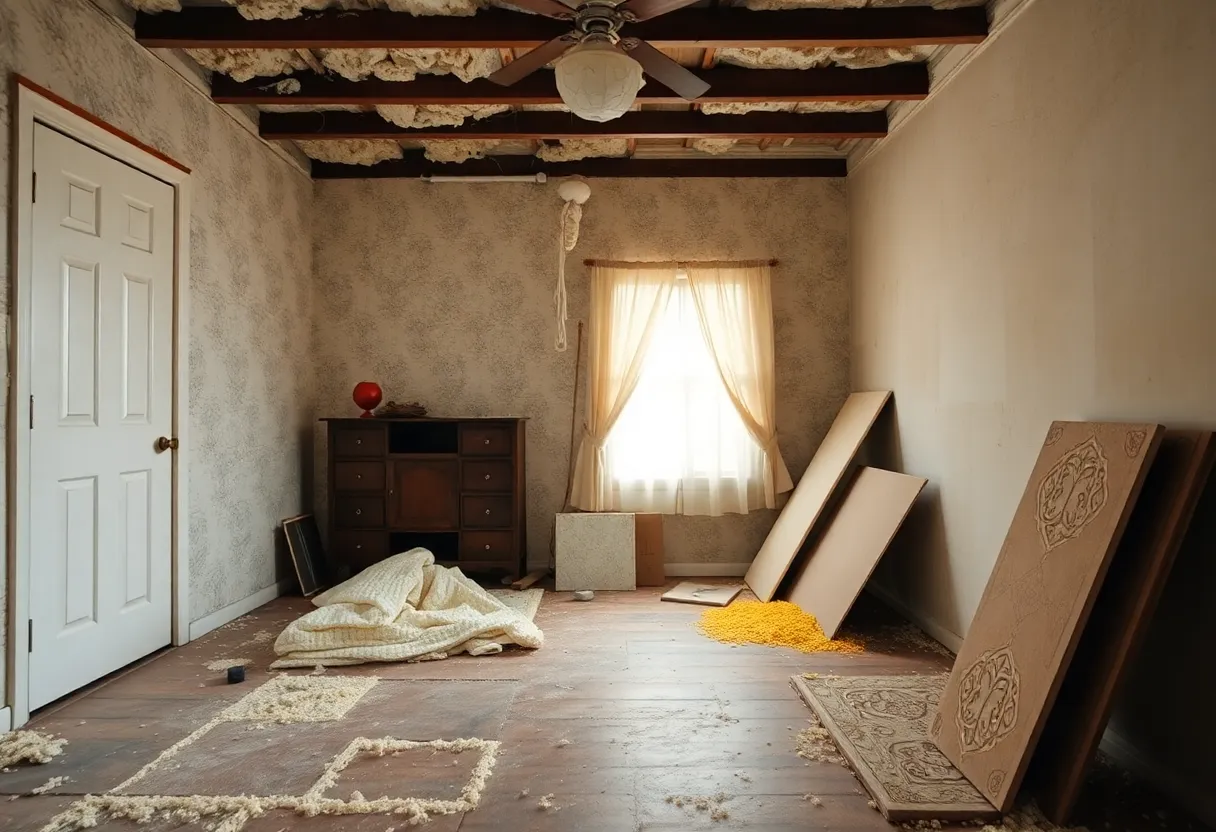News Summary
Johnson & Johnson is facing a securities fraud class action due to allegations of inflating its stock value by concealing asbestos contamination in its talc products, such as baby powder. A recent ruling allows the lawsuit to proceed to trial, revealing the potential ramifications for the company, which maintains that its products are safe. Investors aim for accountability, while J&J stands firm in its defense against the claims.
Johnson & Johnson Faces Securities Fraud Class Action Over Asbestos Scandal
In an escalating legal battle, Johnson & Johnson (J&J) is embroiled in a securities fraud class action concerning allegations that the company artificially inflated its stock value by concealing asbestos contamination in its popular talc products, including baby powder. A recent ruling by a Third Circuit panel has permitted the lawsuit to proceed to trial, revealing the potentially far-reaching consequences for the pharmaceutical giant.
Legal Developments and Class Certification
The U.S. District Judge Zahid Quraishi certified the investor class in December 2023, concluding that the period for claims ended on December 13, 2018, when a news exposé unveiled internal documents indicating that J&J knowingly suppressed information relating to the contamination of its products. This exposé was pivotal in revealing the truth to investors, who felt blindsided by prior partial disclosures that had already indicated potential issues.
According to the panel’s analysis, various disclosures during this timeframe were directly linked to significant declines in J&J’s stock valuation. The court noted that the alleged deceptions, which created a considerable price impact on investors’ assets, justified the continuation of the class action against the company. Notably, U.S. Circuit Judge Patty Shwartz underscored the importance of recognizing that even disclosures based on already public information can relay potent market signals that could influence investor behavior.
The Investor Perspective
Investors’ legal representatives, led by Bobby Henssler, have expressed eagerness to bring their case in front of a jury, emphasizing the significance of the ruling in advancing their fight for accountability. However, it remains unclear when the trial will take place as the road ahead continues to be fraught with legal complexities.
J&J’s Defense and Future Implications
Meanwhile, J&J has staunchly maintained that its talc products are free from asbestos, arguing that the investor disclosures relied on information already in the public domain and thus do not warrant a securities fraud claim. J&J’s worldwide vice president of litigation, Erik Haas, has voiced disappointment over the Third Circuit’s ruling and hinted at plans for an en banc review, which suggests a significant uphill battle ahead.
However, dissenting opinions within the ruling indicate that further investigation into the alleged lack of price impact caused by J&J’s disclosures could still emerge. Judge Cindy K. Chung has opined that the lower court may have overlooked critical details vital to the case’s interpretation.
The Wider Context of Legal Challenges
This ruling marks J&J’s second major defeat in 2023, following a bankruptcy court decision that blocked its attempt to resolve lawsuits from over 62,000 plaintiffs asserting health complications tied to its talc products. In a notable case earlier this year, a jury in Boston awarded $42.6 million to plaintiffs who alleged that their mesothelioma was related to J&J’s baby powder. This verdict stands as one of the largest mesothelioma-related awards in Massachusetts history.
Despite the mounting legal challenges, J&J remains resolute, claiming that the verdicts are based on what they describe as “junk science.” The company insists that decades of research affirm the safety and lack of asbestos in its products, which they argue should diminish the influence of these legal setbacks.
Financial Settlements and Future Prospects
Moreover, Massachusetts recently received $14.5 million as part of a significant $700 million settlement with J&J regarding marketing allegations surrounding its talc-containing products, expanding the financial ramifications of the ongoing controversy. As the situation unfolds, J&J’s fate hangs in the balance, with more court battles on the horizon in 2024 and beyond.
The implications of these legal proceedings stretch far beyond the courtroom, affecting investor confidence and continuing the public scrutiny of J&J’s practices. As the case moves toward trial, both sides are preparing for what could become a pivotal moment not only for the company but also for the many affected by its products.
Deeper Dive: News & Info About This Topic
HERE Resources
Asbestos Exposure: A Silent Epidemic Among Veterans
Frank Krohmer Takes Action Against Corporations in Mesothelioma Case
Tragic Legal Battle Unfolds After Mesothelioma Death
The Hidden Dangers of Talc and Its Connection to Cancer Risks
South Carolina Supreme Court Delivers Major Blow to Atlas Turner in Asbestos Case
Asbestos Legal Battles: From Clarence Borel to Current Cases
Recent Developments in Mesothelioma and Asbestos Litigation
Recent Legal Victory for Mesothelioma Victim Against Asbestos Company
Contaminated Talcum Powder Sparks Mesothelioma Crisis
Asbestos Trusts Set to Destroy Vital Evidence, Raising Alarm Among Victims and Legal Experts
Additional Resources
- Reuters: Johnson & Johnson ordered to pay $42M after jury finds talc caused man’s cancer
- Wikipedia: Asbestos
- WCVB: $42 million mesothelioma lawsuit against Johnson & Johnson
- Google Search: Johnson & Johnson asbestos
- Courthouse News: Johnson & Johnson to face trial on asbestos-laden baby powder claims
- Google Scholar: Johnson & Johnson asbestos litigation



















